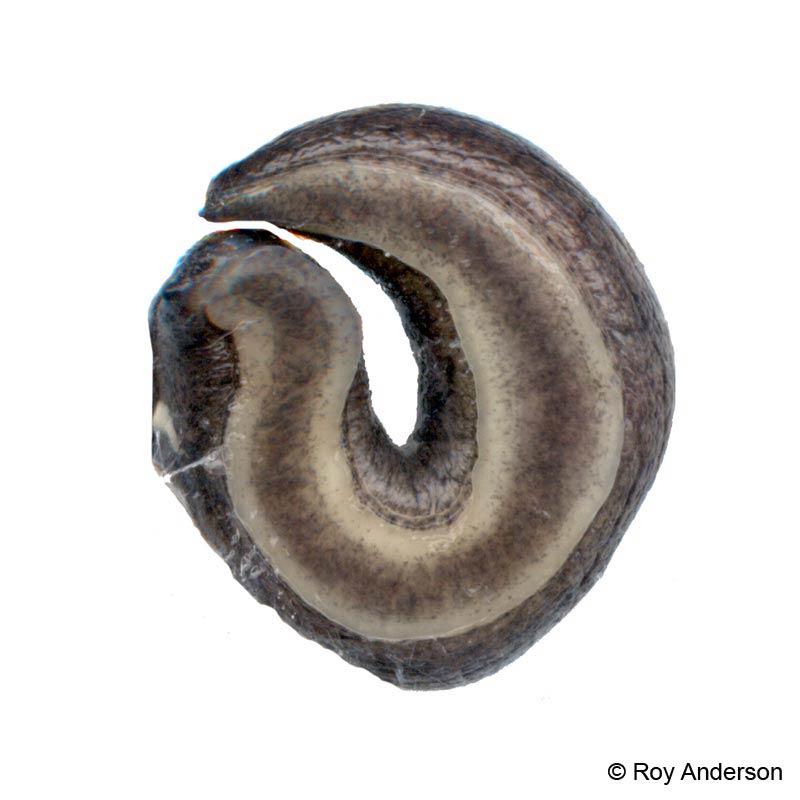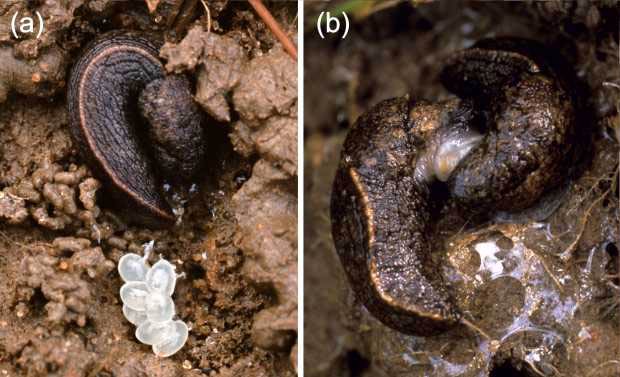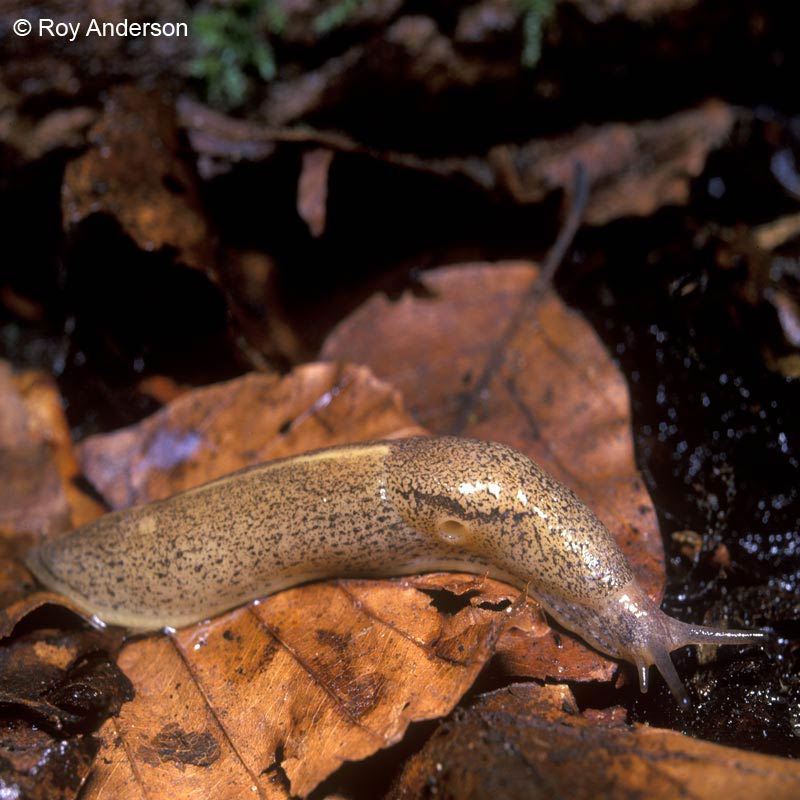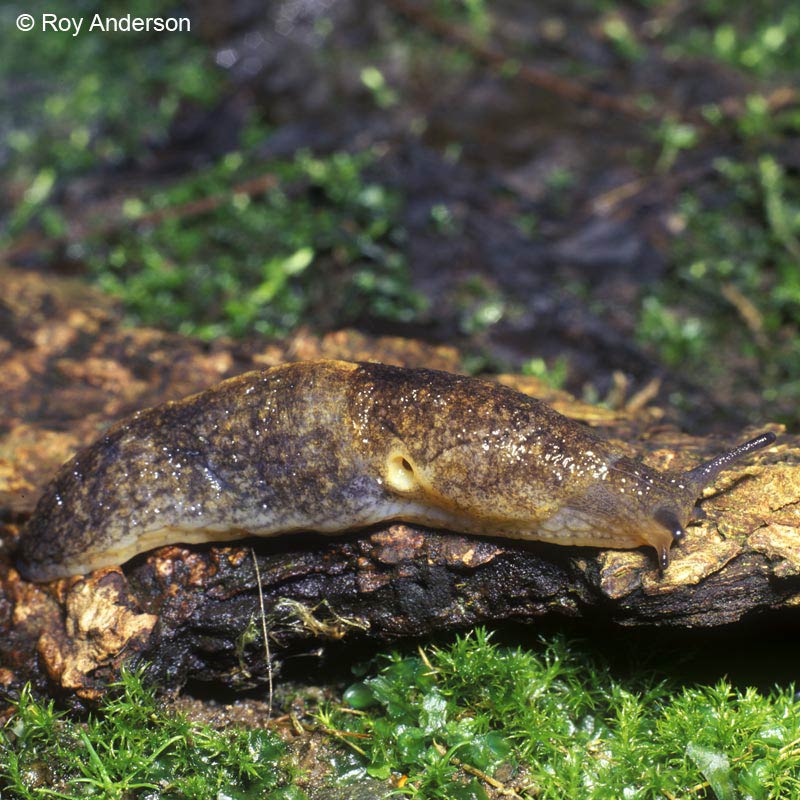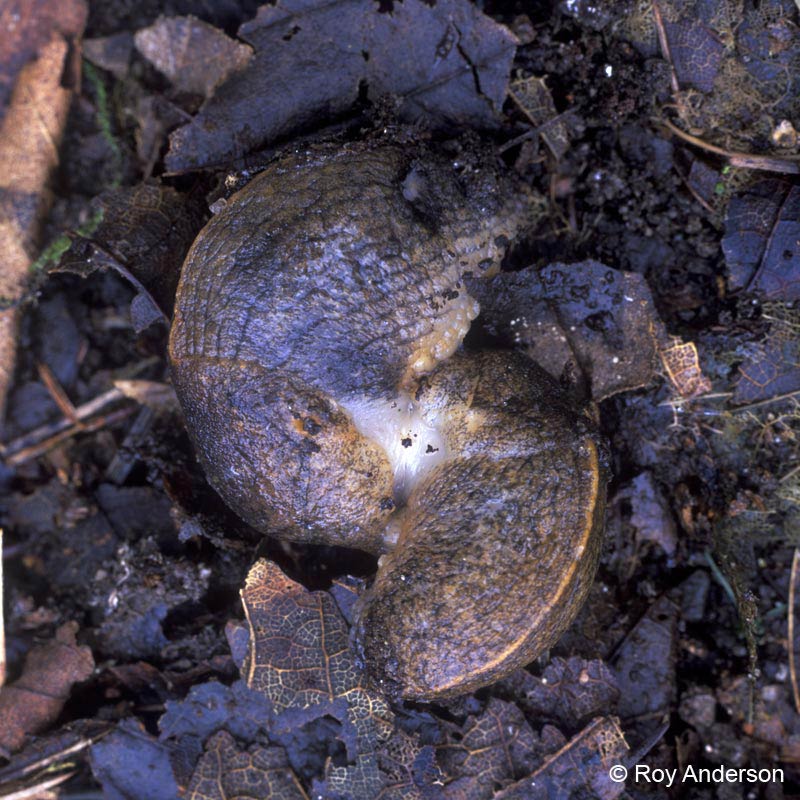Tandonia spp.
|
Tandonia budapestensis. (Photo: © Dr. Roy Anderson, MolluscIreland) |
|
Tandonia budapestensis. (Photo: © Dr. Roy Anderson, MolluscIreland) |
|
Tandonia budapestensis. (Photo: © D. Robinson, USDA-APHIS-PPQ) |
|
Tandonia budapestensis: note horseshoe-shaped groove in mantle. (Photo: © M. Manas, Wikipedia) |
|
Tandonia budapestensis. (Photo: © D. Georgiev, Wikipedia) |
|
Tandonia budapestensis. (Photo: © D. Georgiev, Wikipedia) |
|
Tandonia rustica. (Photo: © Dr. Roy Anderson, MolluscIreland) |
|
Tandonia rustica. (Photo: © Dr. Roy Anderson, MolluscIreland) |
|
Tandonia rustica. (Photo: © Dr. Roy Anderson, MolluscIreland) |
|
Tandonia sowerbyi. (Photo: © Dr. Roy Anderson, MolluscIreland) |
|
Tandonia sowerbyi. (Photo: © Dr. Roy Anderson, MolluscIreland) |
|
Tandonia sowerbyi. (Photo: © Dr. Roy Anderson, MolluscIreland) |
Family
Milacidae
Species
Tandonia budapestensis (Hazay, 1881)
T. sowerbyi (Ferussac, 1823)
T. rustica (Millet, 1843)
Common name
Tandonia budapestensis: Keeled slugSlug:
A snail that either does not possess a shell or has one that is very reduced (no definite coiling) or internal.
, Budapest slug
Tandonia sowerbyi: None reported.
Tandonia rustica: Bulb-eating slugSlug:
A snail that either does not possess a shell or has one that is very reduced (no definite coiling) or internal.
, Root-eating slug
Description
Tandonia budapestensis: Mature, fully extended members of this species will be between 50-70 mm long. The body color of this species is variable. Typically the animals appears black at fist glance; however, it has a pale cream or orange background with very dense, dark-colored speckling. This species has a distinct olive or pale orange-colored keelKeel:
Also known as the carina. This is a longitudinal ridge that runs dorsally along the apex of the tail of the animal.
that extends from the tip of the tail to the posteriorPosterior:
Directional term: the rear or tail end of an animal.
margin of the mantleMantle:
A fleshy, membranous covering of the anterior portion of the body of a mollusc. It secretes the materials that form the shell.
. The pneumostomePneumostome:
This is the breathing hole on the right side of the mantle of molluscs. This allows air to pass through to the lung for gas exchange.(See also breathing pore).
is located in the posteriorPosterior:
Directional term: the rear or tail end of an animal.
half of the mantleMantle:
A fleshy, membranous covering of the anterior portion of the body of a mollusc. It secretes the materials that form the shell.
and has a grey border. There is also a horseshoe-shaped grooveGroove:
An elongate and fairly uniform depression or indentation in the shell or soft parts of a mollusc.
in the center of the mantleMantle:
A fleshy, membranous covering of the anterior portion of the body of a mollusc. It secretes the materials that form the shell.
. The sole is tripartiteTripartite:
Having three distinct section/regions.
: dark in the middle and pale on either side. The footFoot:
The muscular organ on the undersurface of the body of a mollusc upon which the animal rests or uses to crawl.
mucus is colorless. This slender slugSlug:
A snail that either does not possess a shell or has one that is very reduced (no definite coiling) or internal.
often coils into a 'C' shape when it is not active. Other species in this family will contract their bodies into a dome-shape at rest.
Tandonia sowerbyi: Fully extended specimens of this species will be approximately 60-75 mm. The body of the animal is pale or dark brown. Unlike T. budapestensis this species has dark blotches all over its body. The keelKeel:
Also known as the carina. This is a longitudinal ridge that runs dorsally along the apex of the tail of the animal.
is pale in color, and the grooves between the tuberclesTubercles:
An enlarged or raised region on the body of a slug. The shape of this structure is very variable. (See also tubercle)
are pigmented. The breathing poreBreathing pore:
This is the breathing hole on the right side of the mantle of molluscs. This allows air to pass through to the mantle for gas exchange. (See also pneumostome).
has a pale border. The pale sole of this animal produces a contrasting yellow mucus.
Tandonia rustica: This slugSlug:
A snail that either does not possess a shell or has one that is very reduced (no definite coiling) or internal.
can measure up to 100 mm long when fully extended. The color of the bulb-eating slugSlug:
A snail that either does not possess a shell or has one that is very reduced (no definite coiling) or internal.
is variable ranging from off-white to dirty yellow to reddish. All color morphs have multiple black flecks. Similar to the other two species describe in this fact sheetFact sheet:
1). A presentation of data in an HTML format on any subject emphasizing brevity, key points of interest or concern, and a way to convey the most relevant information in the least amount of space; 2). An HTML page itemizing the facts or pertinent information about each of a tool's entities.
. Typical of the Tandonia genus, this species also has a pale colored (yellowish to white) keelKeel:
Also known as the carina. This is a longitudinal ridge that runs dorsally along the apex of the tail of the animal.
. The very large mantleMantle:
A fleshy, membranous covering of the anterior portion of the body of a mollusc. It secretes the materials that form the shell.
occupies approximately 40 % of the animal's body length. There is a lateral, black streak in the horseshoe-shaped grooveGroove:
An elongate and fairly uniform depression or indentation in the shell or soft parts of a mollusc.
in the mantleMantle:
A fleshy, membranous covering of the anterior portion of the body of a mollusc. It secretes the materials that form the shell.
. The cream-colored sole of this species produces colorless mucus. When disturbed, this species produces thick, milky mucus.
Native range
Tandonia budapestensis: Eastern Europe
T. sowerbyi: Western Europe and the Mediterranean region
T. rustica: Central and Southern Europe
Distribution
North America:
- U.S.: Pennsylvania, Washington D.C.
Australasia: New Zealand (except Tandonia budapestensis )
Europe
Ecology
These species commonly occurs in greenhouses, gardens, ploughed fields and woods. They have the capability to burrow into the soil at depths of 37 cm. All species are known to eat living plant material. Tandonia budapestensis has been recorded to be a pest of potatoes, other root crops and ornamental plants.
Synonyms
Tandonia budapestensis:
- Milax gracilis (Leydig, 1876)
- Limax gracilis Leydig, 1876. Arch. Naturgesch. 62(1): 276 (not Rafinesque, 1820).
- Amalia budapestensis Hazay, 1881. Die Mollusken-fauna von Budapest, Malakozool. Bl. (n.s.) 3: 37. Type locality Budapest.
- Amalia cibiniensis Kimakowicz, 1884. Verh. Mitth. siebenb. Ver. Naturwiss. 33: 220.
Tandonia sowerbyi:
- Milax sowerbyi (Ferussac, 1823)
- Limax sowerbyi Ferussac, 1823. Histoire nayurelle generale et particuliere des mollusques terrestres et fluviatiles (Nouvelle division de pulmones sans opercule) 2: 96. Type locality London.
- Limax carinatus Risso, 1826. Nat. Hist. Moll. Medit.: 56.
- Limax marginatus Jefferies, 1862. Brit. Conchol. I: 132 (not Muller, 1774; not Draparnaud, 1805).
- Amalia marginata (not Muller, not Draparnaud) var mongianensis Paulucci, 1879. Esc. Scient. Calabria: 23.
- Amalia tyrrena Lessona & Pollonera, 1882. Monogr. Limacidae Ital.: 56.
- Amalia maculata Collinge, 1895. Proc. Malac. Soc. Lond. 1(7): 336.
- Amalia collingei Hesse, 1926. Abh. Arch. Moll. 2(1): 139.
Tandonia rustica:
- Limax rustica Millet 1843
- Limax marginatus Draparnaud 1805
References
Anderson 2005Anderson 2005:
Anderson, R. 2005. An annotated list of the non-marine Mollusca of Britain and Ireland. Journal of Conchology 38: 607-637.; Barker 1979Barker 1979:
Barker, G.M. 1979. The introduced slugs of New Zealand (Gastropoda: Pulmonata). New Zealand Journal of Zoology. 6: 411-437.; Cowie et al. 2009; Horsák et al. 2004Horsák et al. 2004:
Horsák, M., L. Dvorák and L. Juricková. 2004. Greenhouse gastropods of the Czech Republic: current stage of research. Malacological Newsletter 22: 141-147.; Reise et al. 2006Reise et al. 2006:
Reise, H., J.M.C. Hutchinson and D.G. Robinson. 2006. Two introduced pest slugs: Tandonia budapestensis new to the Americas, and Deroceras panormitanum new to the Eastern USA. The Veliger 48(2): 110-115.; Wiktor 1996


